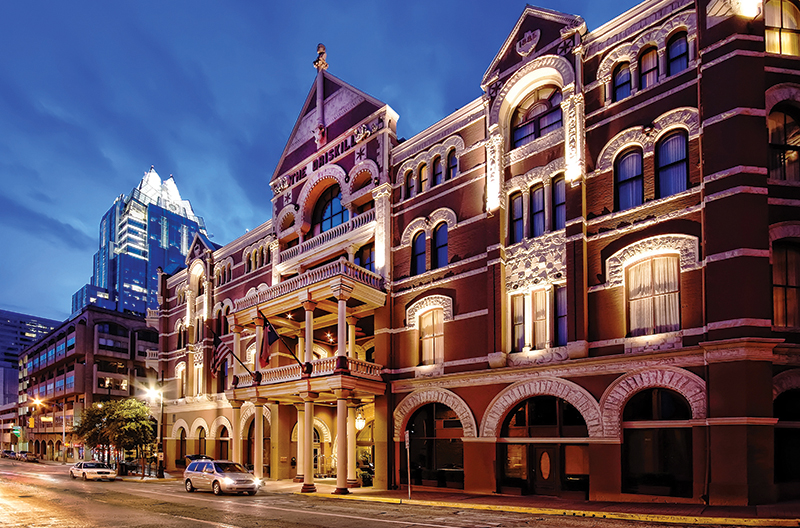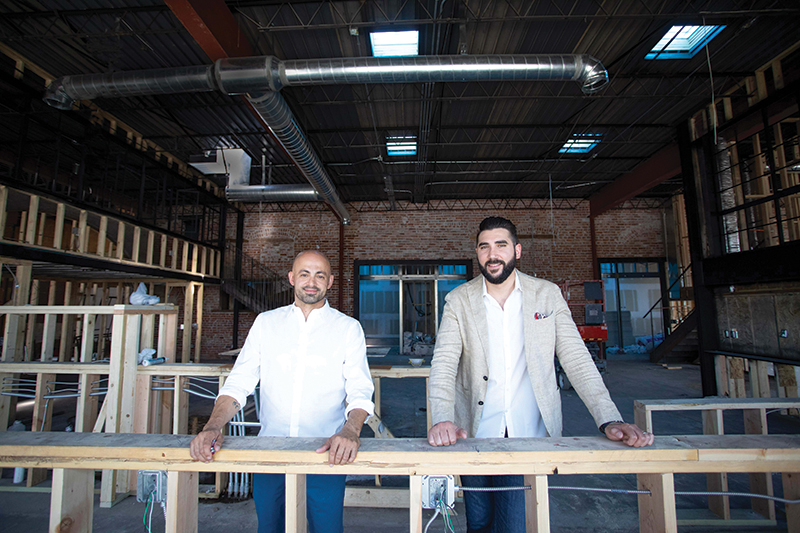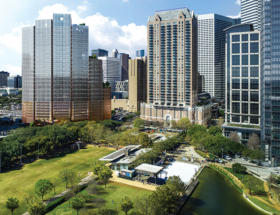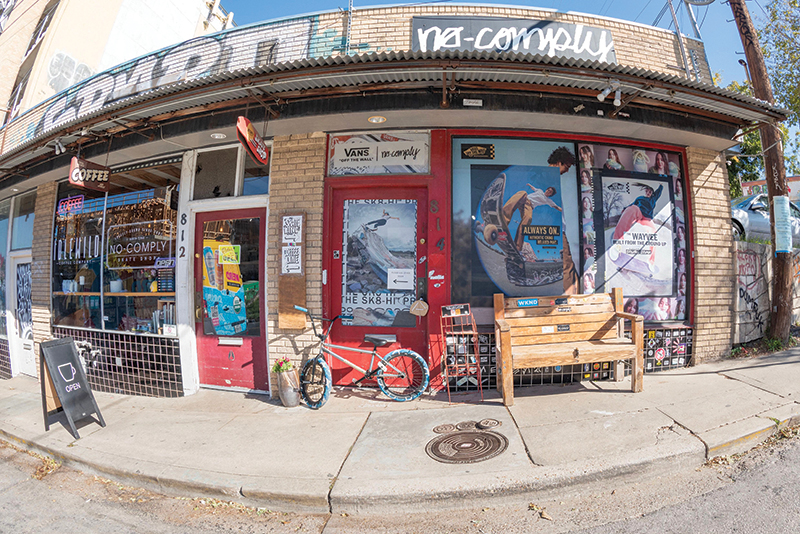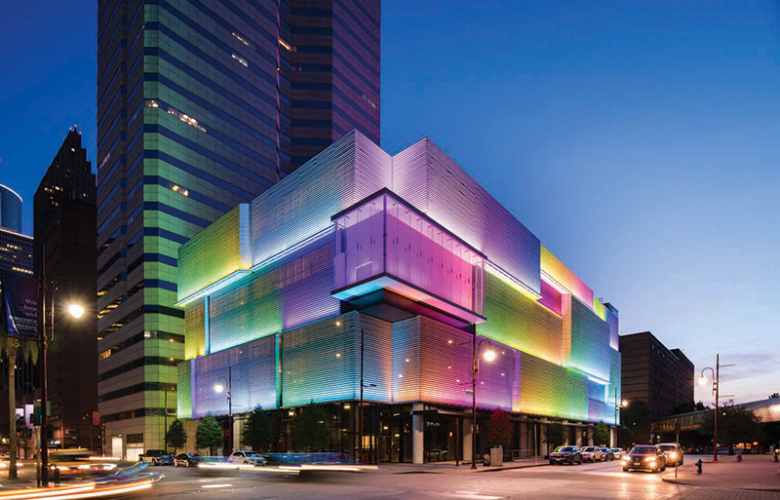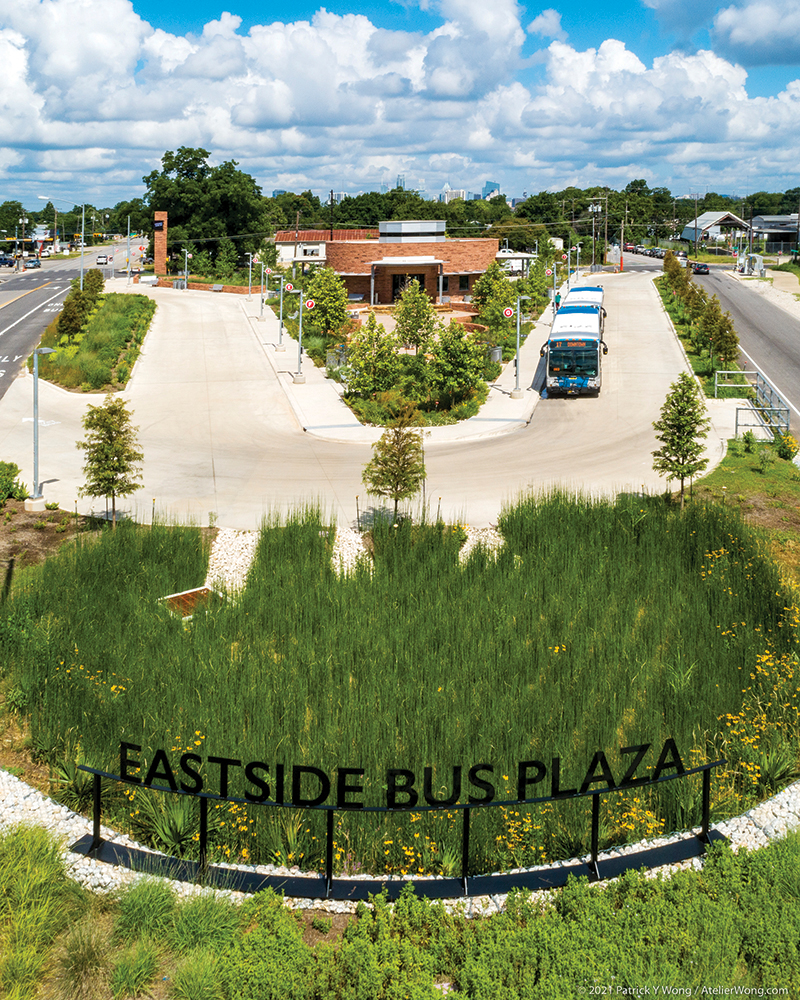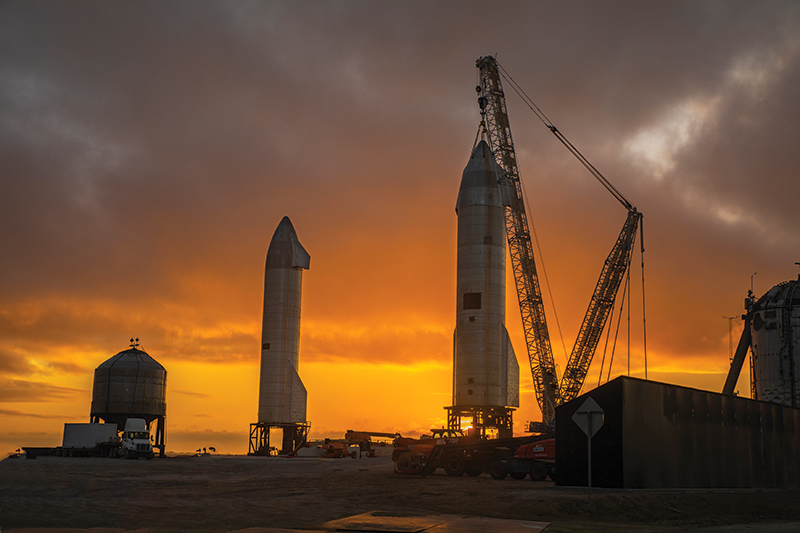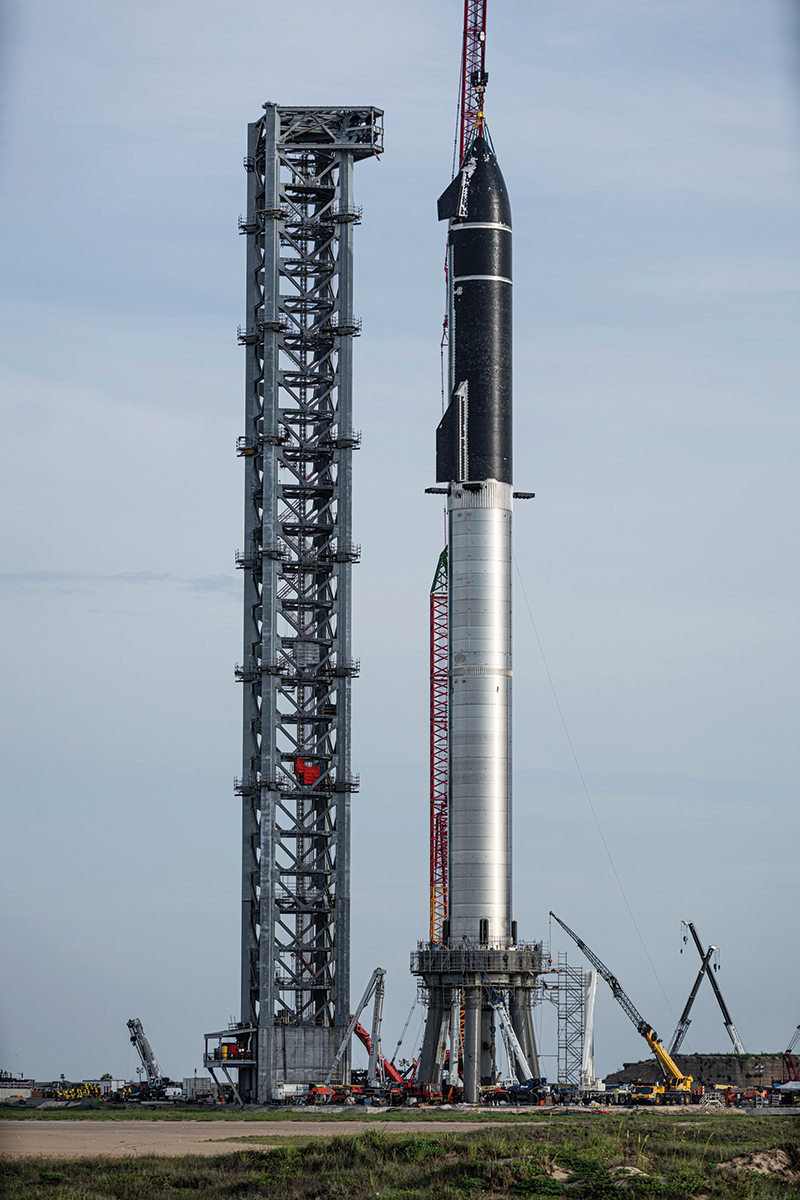Of Money and Rockets
Boca Chica Beach was once a quiet place where childhood memories were made. Now it is where towering spacecraft are assembled and tested. This is but one of the many changes that have come to the region since SpaceX came to town.
Like many journeys pertaining to the New World, the Rio Grande Valley’s history begins at the mouth of a mighty river. Three hundred years ago, the Spaniards called this river Río Bravo. Today, we call it the Rio Grande, and its terminus is Boca Chica Beach.
The name Boca Chica (“Little Mouth”) perfectly describes these natural environs. The fourth largest river system in the United States ends here, but by the time it reaches the Gulf of Mexico, it now is little more than a trickle. Drought and overuse significantly strangle this freshwater system, and in many places one can easily wade across the mouth of the Rio Grande. Immigrants do so regularly, and so the Border Patrol operates a checkpoint along State Highway 4, the only vehicular route to Boca Chica Beach — and, more recently, to SpaceX’s Starbase.
Throughout its known history, Boca Chica Beach has been primarily a fishing village. Indigenous peoples eked out an existence here for hundreds of years. These barrier islands presented a mix of brackish water, seagrass, sand dunes, bays, and estuaries. Fish, crustaceans, birds, and mammals flourish here. Today, through the good stewardship of environmentalists, hunters, and fishermen alike, this area where the ocean meets the land is commonly referred to as the jewel of the Rio Grande Valley.
As is the case for most locals, these are my waters. I take ownership of them. Before I could walk, my parents laid me in the warm sand and waded me through the turquoise surf. My recreational life has been filled with surfing, fishing, and kayaking these waters or hunting the coastal chaparral. I cherish the miles of unbroken sand dunes, the white beaches, and the rhythmic echoes of the breakers that define the deserted splendor of South Padre Island and Boca Chica Beach.
So, along with many concerned locals, I am interested in the plans and development of SpaceX and Elon Musk’s ambitions to change this secluded fishing village into a bustling spaceport. And as an architect, I’m keenly fascinated by the ever-evolving master plan for this complex and its new city. How does a boomtown like Starbase evolve from a roughneck, shoot-from-the-hip, rocket-testing facility to a full-fledged interplanetary spaceport? Could Starbase be the modern iteration of the company town idea that can be found in Hershey, Pennsylvania or Pullman, Illinois? Could it develop a campus-like feel that attracts employees to stay and work in the Valley? Could it do that in a way that’s ecologically sensitive? Does it “grow smart”? “Boomtown” — particularly in America — is synonymous with failure. How does SpaceX intend to get it right? Do they even care?
It’s important to understand the breadth and scope of Musk’s ambitions for Starbase. Recent reports describe an estimated cost for his gateway to Mars to be a whopping $20 billion. It appears that the 400 acres currently under development represent just a foundational effort. Some say an additional 1,000 acres (or more) have recently been acquired and/or controlled. To date, there are already 1,400 new employees and contractors building rockets, launchpads/towers, tank farms, and support facilities. In tweets, Musk says that Starbase will grow to several thousand people in the next year or two. The goal would be for Starbase to accommodate all launch site construction personnel, space travelers, and spectators wanting to watch a launch. Plans call for daily launches to the moon or Mars by 2030. Reportedly, Musk plans to incorporate Starbase so that he can have greater control and freedom to grow.
The basics for an incorporated city will likely require housing and lodging, utilities/infrastructure, local government support facilities (administration/fire/police/public works), and provisions (food and sundries). Except for the 30 1960s-era vacation homes, none of these basics currently exist. It’s a chance to start a new town from the ground up. The city limit sign might someday read, “Welcome to Starbase, Texas: Last Town Before Mars!”
Currently, there are two primary areas of expansion at Starbase: the Launch/Landing Control Center and the Launch Area. In September of this year, the FAA released the draft of the environmental assessment for SpaceX’s Boca Chica Launch Site. In addition to describing the environmental impact that the operations will have on the launch site, this document also provides the public with the latest information on how SpaceX intends grow these areas. I should point out that these plans have historically been quite fluid, and this trend is likely to continue; it’s just the way Musk rolls. In the environmental assessment, it has become apparent that SpaceX will use Starbase primarily for the testing and launching of Starship, a fully reusable launch system designed to have the capability to deliver heavy payloads into orbit. Other launch sites in California and Florida are deemed impractical because the Starship Program would interfere with other launch programs. This continues to be good news for the long-term development of Starbase, since the Starship Program is the flagship endeavor for SpaceX as it ventures to the moon, Mars, and beyond.
So, what does this infusion of capital mean to the economic development of the City of Brownsville and Cameron County, as a whole? To gain some perspective from those living in Brownsville, I first spoke to its mayor, Trey Mendez.
“September of 2019 was my first real exposure to Elon Musk and SpaceX,” Mendez says. “With the Starship prototype behind him, Musk spoke about the aspirational goal of wanting to get to Mars within a few years, which of course, at the time, seemed very unrealistic.” Mendez concludes by noting: “It’s estimated there are nearly 2,000 new employees and that 80 percent of those are from the Rio Grande Valley. This is a good thing because any time you get a chance to bring in local people and pay them a really good wage, it’s good for the entire Valley, not just for Brownsville. Besides that economic impact, we’ve seen stories about how the pandemic has caused restaurants to really suffer, but in Brownsville, we’ve seen that many restaurants have survived because of increased food orders and purchases that have helped them stay afloat during the pandemic.”
Mendez has heard unconfirmed reports that SpaceX has invested close to $700 million in Starbase in the last few years. He says the beehive of activity in the 400 acres of Starbase includes improved utility infrastructure, new launch vehicles, pads, and assembly buildings. For employees, SpaceX has purchased and refurbished many existing homes and built an RV park for 60 Airstreams. They’ve also built a restaurant and a launch observation facility.
How does SpaceX’s investment translate as an economic multiplier for Brownsville and the greater Cameron County area? The Greater Brownsville Incentives Corporation (GBIC) and the Brownsville Community Improvement Corporation (BCIC) are two agencies that promote economic development for the City of Brownsville, and they helped answer that question.
Ramiro Aleman, director of business recruitment, retention, and expansion at GBIC, explains: “With a company as well known as SpaceX as the anchor, other aerospace companies are starting to find out why Elon Musk has decided to invest in the Brownsville area. Along with the additions of Space Channel, Spaced Ventures, and 9Point8, we are seeing aerospace companies inquire about a location on a regular basis.”
Aleman adds: “SpaceX has had a tremendous impact on local service providers. Several suppliers have expressed to us that they would not have been able to keep their doors open during the pandemic if it wasn’t for SpaceX. Hotel occupancy remained strong during the pandemic due to SpaceX employees staying in Brownsville.”
Josh Mejia, president and CEO of BCIC, confirms that the demand for skilled labor has not stopped. He says: “This has caused a tremendous strain on the local employers here in the RGV, where SpaceX is paying much better wages. You combine that with stay-at-home incentives, and you have a work force shortage that significantly inflates construction costs.”
Mejia further states: “There’s a lot of new developers who are catering to the spectators and tourists that simply want to go visit Starbase. This has spurred a lot of new land acquisition along State Highway 4, including a new ‘glamping’ facility for outdoor camping. SpaceX employees are acquiring new residences and other investment opportunities in Brownsville.” Mejia feels that this is just the beginning of what is predicted to be exponential growth.
The aerospace companies that will work in concert with SpaceX have Cameron County and the Rio Grande Valley on their radars. Mejia goes on to say: “You have big and mid-level players in this new space economy trying to plant a flag within this industrial area next to SpaceX. Harlingen already has that presence with United Launch Alliance. So, we are seeing those mid-level companies submitting offers for land. Additionally, the smaller-level companies are taking advantage of the economic development incentives that we are providing, like incubation or opportunities to scale up.”
Mejia opines: “It’s just a matter of time before we start seeing some bigger, more established players come in. And that’s probably one of the reasons why SpaceX has been very tight with their information. They see this as an untapped area that will soon change dramatically because of the major players interested in the area. Some of these players are direct competitors of SpaceX.”
Many questions are yet to be answered. Most of the people that I spoke to have great hopes for our region. SpaceX has brought a promise of prosperity. One thing is certain: SpaceX has planted its flag in the dunes of Boca Chica Beach. What once seemed to be overly optimistic promises are now reflected in actions. And those actions are abundant.
For Musk, prospects lie in the final frontier. For us in South Texas, prosperity is an unrealized dream. SpaceX could be the impetus that launches South Texas into a yet-to-be-experienced frontier, a frontier of economic opportunity and prosperity.
Michael E. Allex, AIA, is a principal at ROFA Architects in Harlingen and McAllen.
Also from this issue
